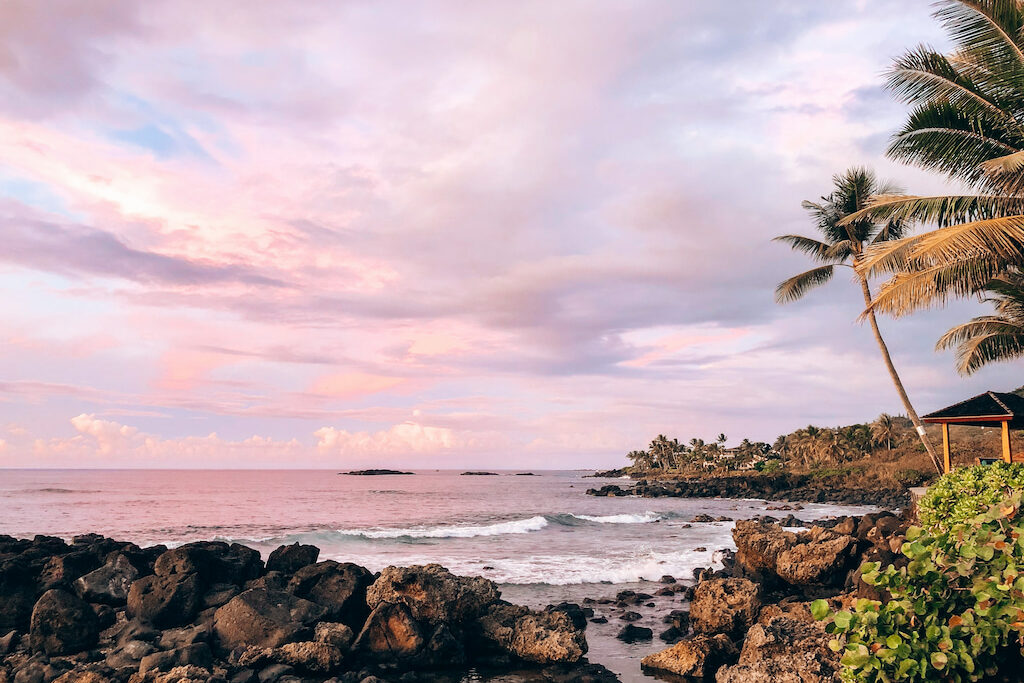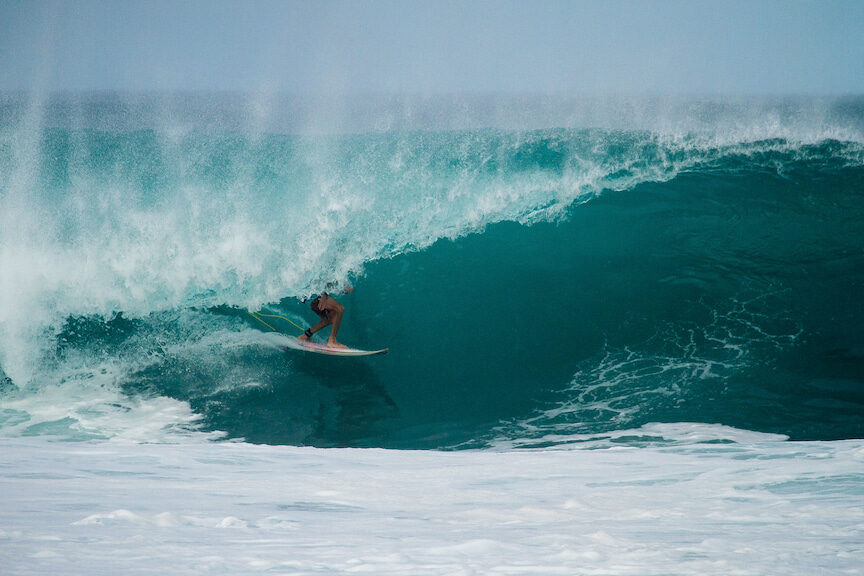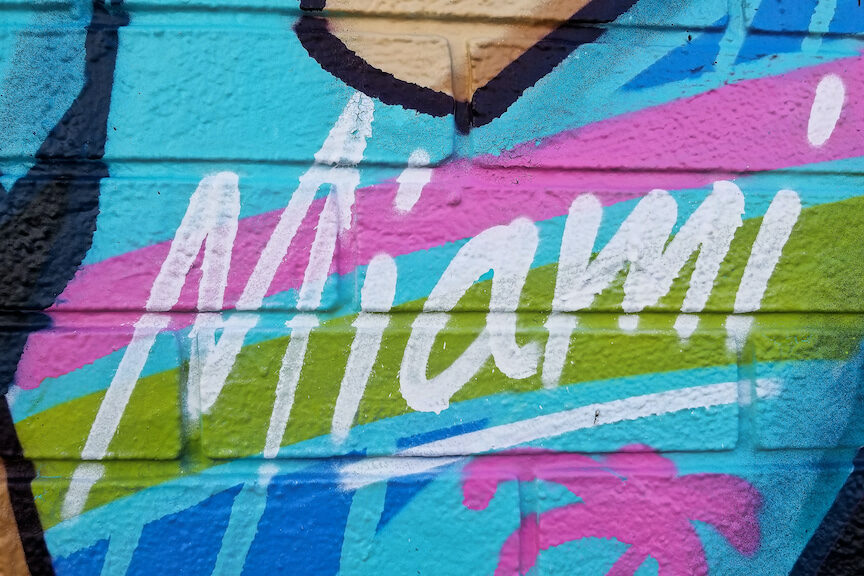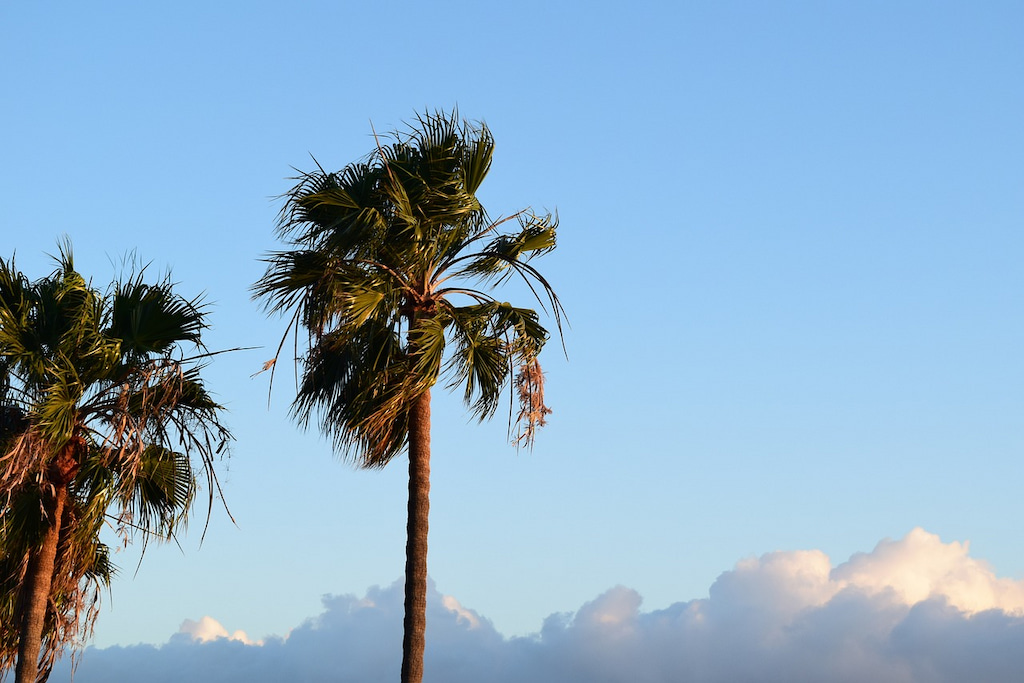Worst Time to Visit Hawaii in 2024

Looking for the best and worst time to visit Hawaii? I’ve got you covered.
As someone who’s explored every nook and cranny of the Hawaiian Islands, I can say with certainty that there isn’t a bad time to visit Hawaii.
Whether you’re dreaming of lounging on the white sands of Waikiki, navigating the rugged trails of Kauai, or snorkeling the clear waters of Maui, Hawaii is a year-round paradise.
Yet, there’s a certain charm in understanding the ebb and flow of island life to optimize your travel experience. My aim with this article is to help you navigate the nuances of Hawaiian weather and tourist seasons to figure out the best time to visit Hawaii for you.
But of course, even in paradise, there is always the worst time to go to Hawaii.
Each of the Hawaiian Islands, from Oahu to the Big Island, has its own rhythm. There are times when you can witness the pros conquer monstrous waves, while at others, you can enjoy serene beaches almost all to yourself.
As we delve into the month-by-month analysis, you’ll gain insights into the temperatures, rainfall, and local events that make each month unique. From my personal experiences road-tripping around the Big Island to enjoying the vibrant nightlife in Honolulu, I’ll provide a comprehensive guide on when to visit Hawaii for the ultimate island experience.
*This post may contain affiliate links, which means I may receive a commission, at no extra cost to you, if you make a purchase through a link. Please see my full disclosure for further information.
Best Time to Visit Hawaii
With its year-round balmy climate, there’s never a bad time to visit Hawaii. But, if I had to choose the best time, I’d suggest the shoulder seasons—April to May and September to mid-December.
These months blend pleasant weather, fewer tourists, and better travel deals, offering an exceptional experience on the islands.
In April and May, the weather is just about perfect, with average temperatures hovering around 83°F (28°C) and less rainfall. It’s a great time to explore the verdant landscapes of Kauai or to visit popular sites in Oahu like Pearl Harbor, Diamond Head, or Waikiki Beach without the usual crowds.
From September to mid-December, you’re treated to the same dry, warm climate and lesser crowds. It’s also the period leading up to Hawaii’s surfing season, and you might catch some early waves on Oahu’s North Shore.
So, whether you’re looking to relax on Maui’s picturesque beaches, explore the active volcanoes on the Big Island, or immerse yourself in the diverse cultures of Honolulu, these shoulder months offer the best balance of weather, crowd levels, and value.
But remember, Hawaii is a tropical paradise year-round, and every season presents a unique flavor of the Aloha spirit!
What is the Worst Time to Visit Hawaii?
Visiting Hawaii is generally an idyllic experience year-round. But if you’re looking for tranquility, the peak tourist seasons, mid-December to March, and the summer months of June to August might not be the best times to visit Hawaii.
Crowds are larger, and the prices for accommodations and airfare can skyrocket. For instance, a beachside condo in Maui that costs $200 in May might go for $400 in July! If you’d rather avoid the tourist bustle and exorbitant prices, consider steering clear of these periods.

What is the Rainiest Month in Hawaii?
Hawaii, with its tropical climate, does see its share of rainfall, which generally intensifies between November and March.
In particular, the month of March often records the highest rainfall, with an average of about 2.3 inches in Oahu.
So, if you’re planning a trip centered around beach relaxation or hiking adventures, keep in mind that these might be interrupted by some rain showers. But don’t despair, these rainy days gift Hawaii its captivating lush greenery and cascading waterfalls.
What is the Hottest Month in Hawaii?
If beating the heat is a priority for you, note that Hawaii’s temperature peaks around 88°F (31°C) during the months of July and August. Besides dealing with the intense tropical sun, you’ll also be vying with summer vacation crowds.
However, the heat also means perfect weather for a swim in Hanauma Bay or catching a stunning sunset on Waikiki Beach, if you don’t mind the company!
What is the Off-Season in Hawaii?
The off-season periods in Hawaii are from late April to mid-June and September to mid-December, right before and after the main influx of tourists.
During these times, the temperatures hover around a comfortable 80°F (27°C) and, as an added bonus, accommodations, and flights are typically cheaper. On a personal note, visiting Kauai during the off-season was a dream – I had the chance to explore the famous Napali Coast almost all to myself!
What Time of Year is Cheapest to Go to Hawaii?
Budget-conscious travelers might want to focus on the off-peak seasons for the best deals.
From late April to early June and September to early December, you’re likely to find reduced prices. However, watch out for spikes around major holidays like Thanksgiving.
A little insider tip: take advantage of the many farmers markets during these months for fresh, local produce at unbeatable prices!
Cheapest Time to Fly to Hawaii
Cheap flights to Hawaii are more likely to be found from mid-April to early June and September to mid-December. My pro-tip here: Midweek flights often offer the best deals, so try booking on a Tuesday or Wednesday if possible.

Best & Worst Time to Visit Kauai
Known as the “Garden Isle,” Kauai is an absolute dream for nature enthusiasts with its verdant landscapes and breathtaking coastline. But to fully enjoy these natural wonders, timing is key.
The best time to visit Kauai is during its two shoulder seasons, April to June, and September to November. These months provide a great balance of pleasant weather and less crowded attractions. Picture yourself hiking the Kalalau trail in warm, sunny weather without bumping into a crowd every few steps – heaven!
The worst time to visit Kauai would be the rainy season from December to March. While the rain contributes to Kauai’s lush beauty, it can put a damper on outdoor activities. Remember, safety comes first, and many hiking trails can become dangerous during these wet months.
Best & Worst Time to Visit Maui
Maui, known for its beautiful beaches and whale-watching opportunities, can be a completely different experience depending on when you visit.
The best time to visit Maui is during the shoulder seasons of April to June and September to November. During these months, you can expect milder weather, fewer crowds, and better rates for accommodation and airfare. It’s also worth mentioning that Maui hosts the world-renowned Maui Film Festival in June!
On the other hand, the worst time to visit Maui is during the high season from December to March. It’s also the season with the heaviest rainfall, particularly in the Hana area. However, if whale-watching is a priority, you might consider braving the crowds as this is the best time for it!
Best & Worst Time to Visit Oahu
Oahu, home to Hawaii’s capital Honolulu, is a bustling mix of natural beauty and city life. Your experience can vary significantly depending on the time of year you visit.
The best time to visit Oahu is from mid-April to early June or between September and mid-December. These periods offer a great balance between good weather, fewer tourists, and lower prices. I fondly remember walking down the less crowded streets of Waikiki during an off-peak May, stopping for shaved ice whenever the mood struck.
The worst time to visit Oahu is during the high season from mid-December to March, and June to August. These months coincide with winter break and summer vacations, leading to crowded beaches and busy popular attractions, and higher prices.

Best & Worst Time to Visit Hawaii Big Island
The Big Island, with its volcanoes, black sand beaches, and coffee farms, offers a unique Hawaiian experience. Just like the other islands, the time of year you visit can greatly impact your trip.
The best time to visit the Big Island is during the shoulder seasons of May to June and September to November. The weather during these months is typically pleasant, and the island is less crowded. If you’re a coffee enthusiast like me, visiting during November for the Kona Coffee Cultural Festival is a real treat!
The worst time to visit the Big Island is during the peak seasons of mid-December to March and June to August. These months bring heavy tourist traffic and inflated prices.
But, if you’re a fan of humpback whales, December to April is their migration period, making it an attractive time despite being the high season.
Month-by-Month Weather in Hawaii
Hawaii in January
The first month of the year is part of Hawaii’s wet season, but don’t let that deter you. Mild temperatures ranging from 65°F (18°C) to 80°F (27°C) keep the islands welcoming. January is also the wettest and coldest month in Hawaii, but “cold” is a relative term here.
Besides, it’s a fantastic time to observe humpback whales as they frolic around the Hawaiian waters, especially off the coast of Maui.
Hawaii in February
February continues the trend of January, with highs around 81°F (27°C) and lows near 68°F (20°C). As it’s the peak of the rainy season, expect frequent, yet short-lived showers.
February is also a thrill for surfing enthusiasts. It’s the surf competitions on Oahu’s North Shore that take center stage. Surfing professionals gather to ride the challenging winter waves, creating an atmosphere full of excitement.
Hawaii in March
As springtime draws closer, Hawaii experiences a weather shift.
Rainy spells lessen, making way for more sunny intervals in March. You can expect average highs around 82°F (28°C) and lows around 68°F (20°C). In Honolulu, the city pulses with energy during the Honolulu Festival. This vibrant celebration showcases local arts, music, and dance, painting a colorful cultural picture.
Hawaii in April
The island’s weather continues to improve in April, with less rainfall and steady temperatures, seeing daytime highs of about 82°F (28°C) and lows around 69°F (21°C).
Simultaneously, the Merrie Monarch Festival brings Hilo alive on the Big Island. This event, dedicated to King David Kalakaua, features an acclaimed hula competition and exhibits of Hawaiian culture.
Hawaii in May
May delivers the full tropical experience with plenty of sunshine and a warm climate. Additionally, May 1st, known as Lei Day, is a statewide celebration of Hawaiian culture, featuring music, hula dancing, and the art of lei-making.
You can expect average high temperatures of 84°F (29°C) and nighttime lows around 70°F (21°C). Rainfall also lessens considerably during the month of May.

Hawaii in June
June sees Hawaii in its full summer glory, with average highs around 87°F (31°C) and lows near 72°F (22°C). This month brings dry weather, the perfect time to explore Hawaii’s diverse marine life.
For something a bit more cultural, keep your eye out for the Bon dance season. These Japanese-Buddhist festivities feature dance, music, and food, continuing through the summer.
Hawaii in July
July is the warmest month in Hawaii, with daytime temperatures averaging 88°F (31°C) and night temperatures around 74°F (23°C). Despite being high summer, the heat is tempered by the cool Pacific breeze.
A few cool events take place in July in Hawaii including the Prince Lot Hula Festival on Oahu and Kauai’s celebration of its plantation heritage during Koloa Plantation Days.
Hawaii in August
August maintains the summer heat while hosting one of the world’s premier fishing tournaments in Kona on the Big Island. The Hawaiian International Billfish Tournament draws in fishing enthusiasts from all around the globe.
You can expect daytime temperatures around 87°F (31°C), and at night it cools down to a balmy 74°F (23°C). The Pacific waters are inviting, averaging 82°F (28°C). Although it’s the height of summer, pleasant breezes help combat the humidity.
Hawaii in September
September brings a slight cooldown in temperatures with daytime temperatures around 87°F (31°C), and at night it cools down to approximately 74°F (23°C).
The island vibe stays alive though with the Aloha Festivals. Free cultural celebrations featuring Hawaiian music, dance, and history are held across the islands, offering an enriching experience. Tropical storms are rare but be prepared as they can sometimes occur.
Hawaii in October
October’s pleasant weather is perfect for outdoor exploration with daytime highs of around 86°F (30°C) and night lows around 73°F (23°C). Tropical storms decrease in frequency.
The month also delights food lovers with the annual Hawaii Food and Wine Festival. This event offers an exquisite chance to savor the islands’ culinary talents.
Hawaii in November
November signals the return of the rainy season, with average high temperatures around 84°F (29°C) and lows around 71°F (22°C). Showers are particularly expected on the north and east of the islands.
For surf enthusiasts, it’s an exciting time as the Vans Triple Crown of Surfing events kick-off on the North Shore of Oahu.
Hawaii in December
Despite more rainfall, December still presents a holiday spirit like no other. With temperatures rarely falling below 65°F (18°C), Hawaii keeps the festivities warm and welcoming. Whether it’s witnessing an island-style Christmas or ringing in the New Year beachside, it’s truly an experience to cherish.

Worst Time to Visit Hawaii Conclusion
After reading this comprehensive guide, you’ll now be well-equipped to decide when to plan your Hawaiian escape. As we’ve seen, the worst time to visit Hawaii largely depends on your personal preferences and tolerance for a little tropical rain.
If you’re seeking endless sunny days and outdoor activities like hiking or snorkeling, it might be best to avoid the peak rainy season from November to March. However, these months bring unique experiences, such as humpback whale sightings, epic surf competitions, and fewer crowds to enjoy Hawaii’s popular sites like Maui, Oahu, and the Big Island.
Even Kauai, which sees more rainfall overall, can offer delightful experiences during the rainy season. Remember that Hawaiian rain often comes in brief showers, leaving plenty of sunshine to enjoy. It’s the reason I’ve come to think of Hawaii as a year-round destination.
So, is there a definitive worst time to visit Hawaii? Personally, I’d say no. Each month presents a different side of Hawaii, each beautiful in its own right. But if you’re seeking the best weather, dry and sunny summer months like June and July or the shoulder seasons like April, May, September, and October would be your best bet.
To sum up, the worst time to visit Hawaii is a subjective concept, and the Aloha State always has something enchanting to offer, rain or shine. Safe travels on your Hawaiian adventure!
More Hawaii Travel Guides
Best Luxury Hotels in Hawaii, USA
Top Kauai Boutique Hotels
Favorite Big Island Hawaii Hotels
Best Beachfront Resorts in Waikiki
Top Boutique Hotels in Maui
Best Instagram Captions for Your Hawaii Vacation
Sunny Maui Instagram Captions
Funny Hawaii Puns for Social Media Post
Best & Worst Time to Visit California
Best & Worst Time to Visit Alaska






